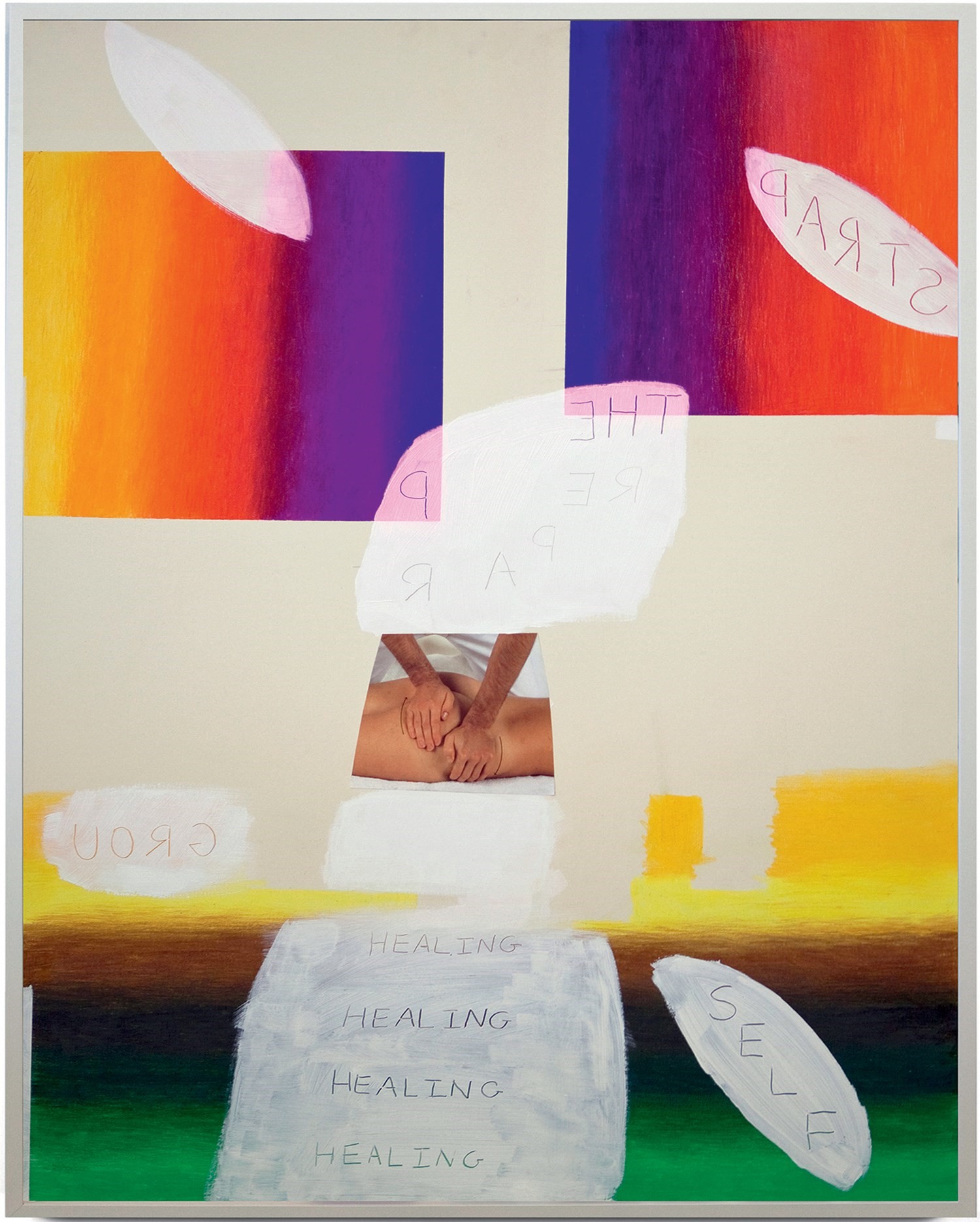Imagine a feminist idyll. What would it look like? A piece of land, perhaps, bowl-shaped with forested hillsides that slope into a large, beautiful meadow? A place where only women roam? In 1976, the Oregon Women’s Land Trust (OWLT) acquired just such a spot, a vast 147 acres in size; and with that purchase, a radical feminist movement was born. Here, the trust established a ‘womyn’-only community – open to any woman, no matter her means – that became the first of many female-owned communes to crop up across the US. At each, the political and environmental ideals of its inhabitants were placed at the top of the community agenda. Lesbian lands, or landdykes – so-called by their female inhabitants, 90 per cent of whom were homosexual – were an opportunity for women to go back to the land, to a place with no preformed structures. Here, they could build their own, outside patriarchy.
As the codes of contemporary feminism fill our news feeds in a mid-Trump world, this Seventies haven, replete with both optimism and controversy, became the focus for artist Carmen Winant. “I fear that, after Lesbian Lands, I’ll never be able to make a piece of art again, because it’s where all roads have led me,” she explains, just days after unveiling the first chapter of the project. “As a person, a feminist, an artist and a writer, all my life I’ve been dealing with these questions of how to get around patriarchy and whether mainstream feminism goes far enough.” Developing her art criticism alongside her fine art practice at UCLA, Winant found that journalism couldn’t offer her the creative freedom she felt was necessary to respond to the complexities on her mind.
Winant’s ensuing body of work comprises sculpture, installation and two-dimensional pieces. Invariably, but perhaps lazily, one might describe them as collage. In fact, whatever the size of frame or structure, they are home to a frenetic combination of found imagery – whether from books, instructional leaflets, magazines or posters. Taped into place with the visibility of the haphazard human hand, they are connected almost always by their portrayal of the female.
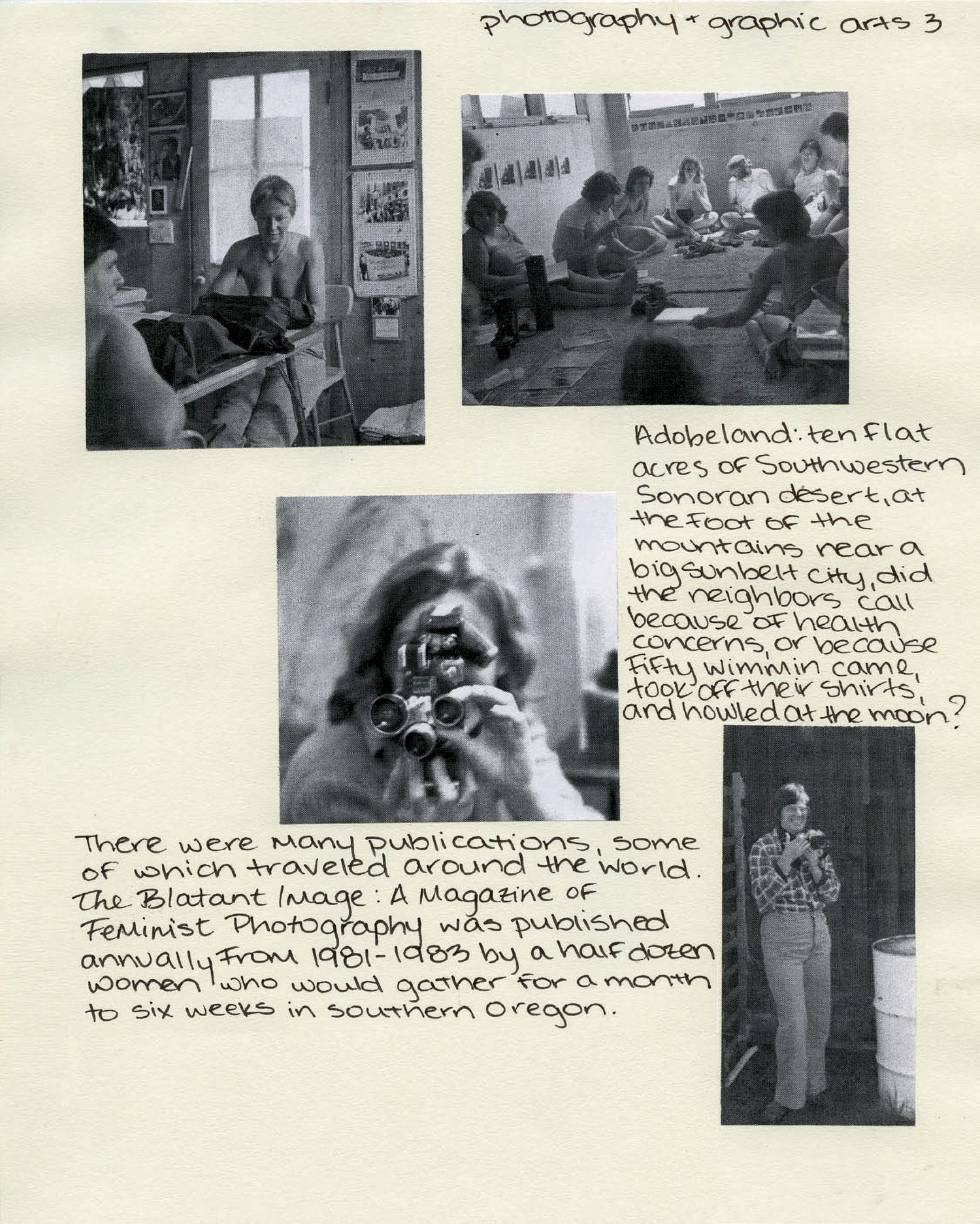
For the Lesbian Lands installation at the Columbus Museum of Art this year, however, Winant appeared to have diverged from her usual photomontage approach, in presenting two unlikely seeming objects. The first, a large wooden-framed structure, resembles that of a photo studio originally captured mid-construction by photographer Ruth Mountaingrove on one of the many lesbian lands she lived on in southern Oregon. The second item is a consciousness-raising rug – the kind on which womyn would sit, talk, share and engage in their collective experience. The wooden work is paved with a collage of the OWLT’s archive imagery: pictures of women building, taking photographs, learning instruments, riding motorbikes, gardening – often naked or topless. The radiant, silvery photographs are arranged and annotated with a free-form essay about the movement, detailing Winant’s awe, as she begs questions of this generation of pioneers. This time, having started with the found imagery, the artist worked outwards, constructing a three-dimensional space.
“I came across an image of a woman, nude, and she’s taking a photograph of herself in the mirror. I was so bowled over by it. I learnt through my research that photography was central to many of the communes – each one built a photography studio and they had what they called ‘ovulars’, they didn’t call them seminars.” (The word seminar, coming from semen – to spread seed – was not welcome here.) The ‘womyn’ created a photographic language in order to rewrite ‘herstory’. “Women for so long had been pictured by men, and a big part of reclaiming their lives was about inventing new languages,” Winant explains. “But I think it was also about documenting.” Swathes of such images fill the OWLT archive: records of the step-by-step construction of the first photo studio and various other buildings on site. The frame that Winant reproduced resembles them – unfinished, mid-construction – burgeoning with promise. Channelling the hope and togetherness of this era, the lesbian lands’ doctrines feed into several of Winant’s new projects rolling out this autumn, with shows at Stene Projects in Stockholm and at Cave Detroit.
Winant deals in feminist imagery. Lesbian Lands aside, this rarely means images taken with feminist intent; rather that, through repurposing and re-contextualising printed matter, they are feminist once she is done with them. The work Looking Forward to Being Attacked is a prime example. For its two-dimensional incarnation at the Kate Werble Gallery in New York in 2016, Winant layered found images and sepia prints of women performing self-healing: reflexology and self-massage. Under this title they are evidence of an assumed wound, or an inevitable suffering, but they are also proof of a woman’s ability to heal herself – a reminder of her power. They predate the social media-adopted term ‘self-care’ – a hashtag under which more than six million images sit, spanning sheet masks, yoga poses, invisible retainers, bottles of red wine, bowls of fruit, cups of herbal tea and bath oils.
The later work, shown at Long Island’s Sculpture Center at the beginning of this year, took the form of a boulder built on-site out of concrete patch. Winant pasted more than 1,500 images of women practising self-defence onto the structure’s surface as it quickly dried. The black-and-white images, plastered into place with immediacy amid grey stucco smears, have an abstract Seventies feel. There are bouffant hairdos, flares, aerobics gear and full-body leotards; they are awkwardly staged, often against studio backdrops. Men and women pose in mock duels – mid-throttle or mid-jab, with limbs poised at perfect right angles – and in their huge quantity, these pictures appear flattened, like textbook illustrations. They are practical responses to sexual violence and, when presented today, draw parallels between the era of sexual liberation and our contemporary world, where the probability of these violent acts seems increasingly high (though statistics might confirm this rise, they may also indicate we’re simply talking about it more). Rather, their likelihood resembles a schoolbook maths equation and yet, rendered in this hulking form, these objectified pictures become a confrontational truth.
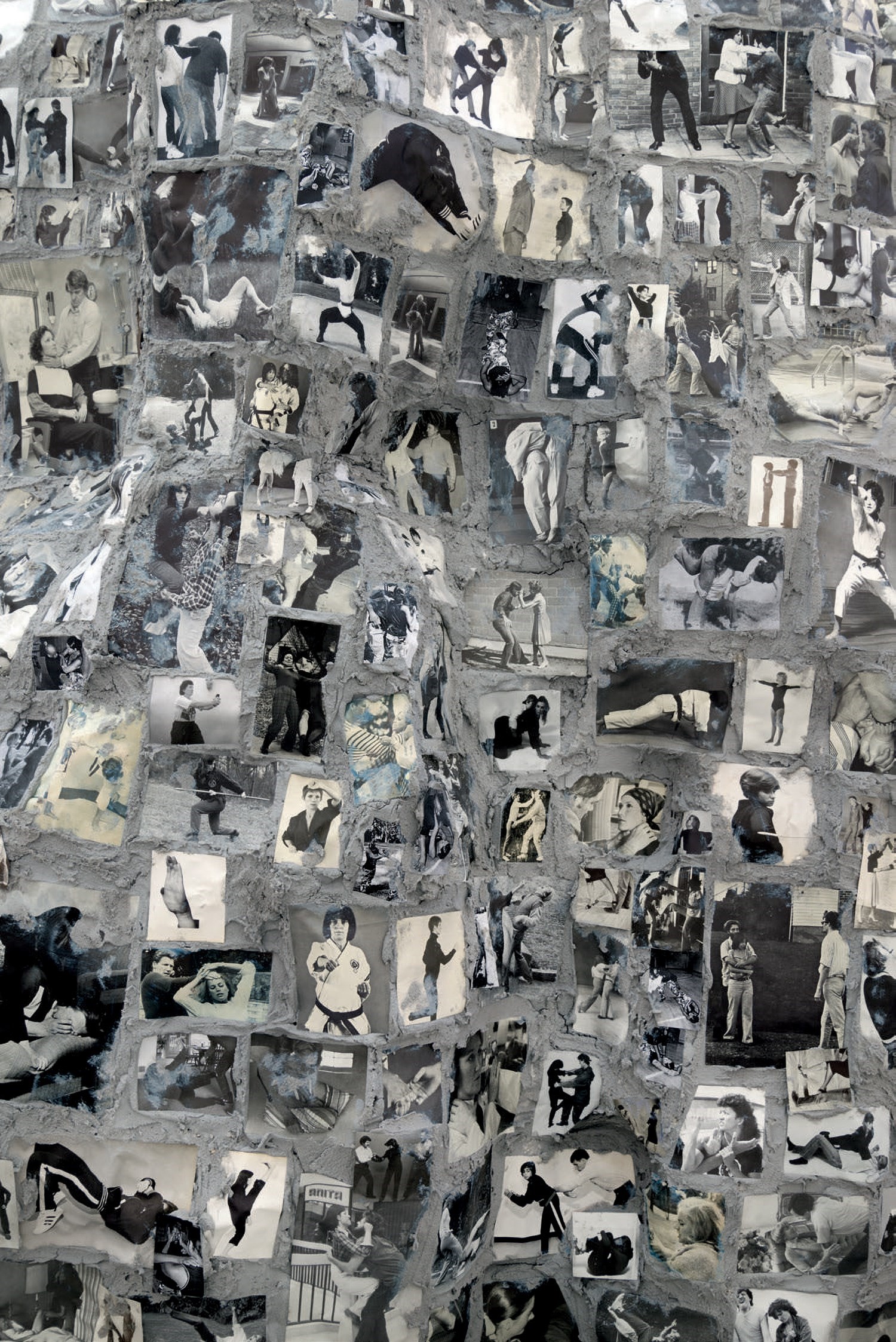
So is feminism always the filter through which Winant views and selects the imagery she works with? “Well, feminism is a filter through which I live my life,” she says. And though she acknowledges the potential extremity of this statement, the artist attributes it to an instinctual awareness she developed in her adolescence. Her mother, who “travelled a lot for work in international reproductive women’s health” when Winant and her siblings were young, was an active feminist. “I learnt a lot about that history and the ideology from her, but when I came into it for myself, there was no distinction in my mind between being a person of politics and being a person of art.” Unable to reconcile her feelings with contemporary third- or fourth-wave feminism, Winant plants herself “between the waves”, somewhere after the flawed second wave but before the cynical feminism she sees today. “It’s hard to put your finger on it historically because it’s such a fluid thing, but I don’t feel shy about that part.”
On contemporary feminism, the jury is still out. “I see so much progressive work, activist work and intellectual work existing across all platforms and I think it’s really amazing. I guess I do wonder about the trendiness of feminism. I want feminism to be popular, of course, but I’m just sceptical of how it’s been so quickly absorbed into capitalism. It seems like feminism is at risk of being diluted when we use it to sell underwear, or when we use it to talk about posting sexy pictures of ourselves online. I feel as though it always needs to be a radical force. I feel optimistic about it but I also feel really troubled.” Thus her position between the waves frames Winant’s work, not simply its subject matter but her continual return to imagery of the late 20th century. In some ways, it even informs her analogue approach – a bid to fix this fluid but elemental concern.
Winant’s biggest break came by way of a position in the Museum of Modern Art’s annual photography show, this year named Being: New Photography 2018, with her work My Birth. Taking neither new, nor her own photographs, Winant taped more than 2,000 images onto MoMA’s walls, each depicting an aspect of labour or childbirth. Thighs streaked with blood; a blissed-out new mother, babe-in-arms; contorted bodies; agonised faces; calm expectants waiting; anxious ones pacing; the purple face of a newborn as it’s pushed into fresh air. The project came into being when Winant stumbled across the images her mother had made of her own births of Winant and her two siblings. “I felt really knocked out by how my mother looked,” she says. “She looked so possessed and beautiful.” And having recently given birth to her own son, she was moved by the dissonance between images and experience, by the idea that this universal truth was impossible to explain.
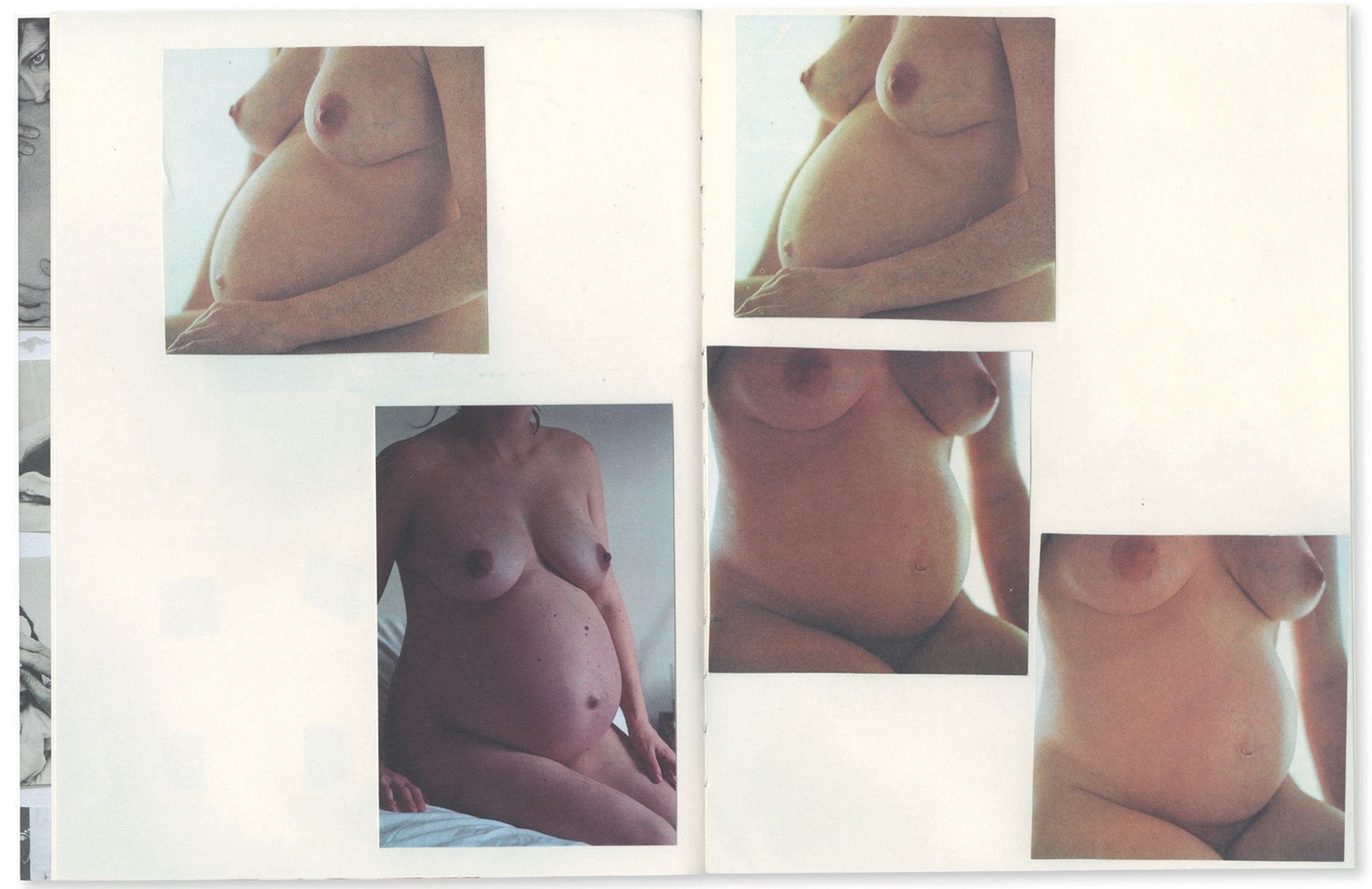
The ensuing onslaught of imagery is a demonstration of just this impossibility – a bombardment of pain, beauty, anguish and joy, work as an operatic performance of her desire to share the experience. Each picture pasted to the wall is an index of a journey, with edges crinkled from a previous life. Perhaps they had lived in a textbook or pamphlet, lugged home in a handbag from a clinic and handed over, years later, to a friend. Maybe they escorted a young pregnant woman home and lived out their months splayed open on a bedside table, only for their graphic vividness to shrink a little beneath the lamp. In the show’s accompanying book, Winant writes of the uneasiness with which we approach this, the most natural topic of all. The chorus of images in question serves to blow that trepidation apart, just as her time-worn pictures disrupt the notion of ‘new photography’ at MoMA.
In that same accompanying essay, Winant talks of her mother’s presence in the room in which she gave birth to her first child: “In the moment in which a body was coming out of my body, and the body that I came out of was also present in the room, I felt distinctly that I was experiencing two births: my child’s, and my own. There ought, I thought, to be a ritual for being born twice, Sylvia Plath wrote in The Bell Jar. There is no other way to say it: When I gave birth, I also experienced my own deliverance.” This collapsing of time appears throughout her works as she re-contextualises objects already laden with the past in order to make sense of our present, and perhaps even our future. As such, it’s Winant’s own source to which she returns again and again – like Courbet’s L’Origine du monde. “Everything I make is about my mother, directly or indirectly,” she says. “It’s about her influence, her body, her politics and the history she lives through.”
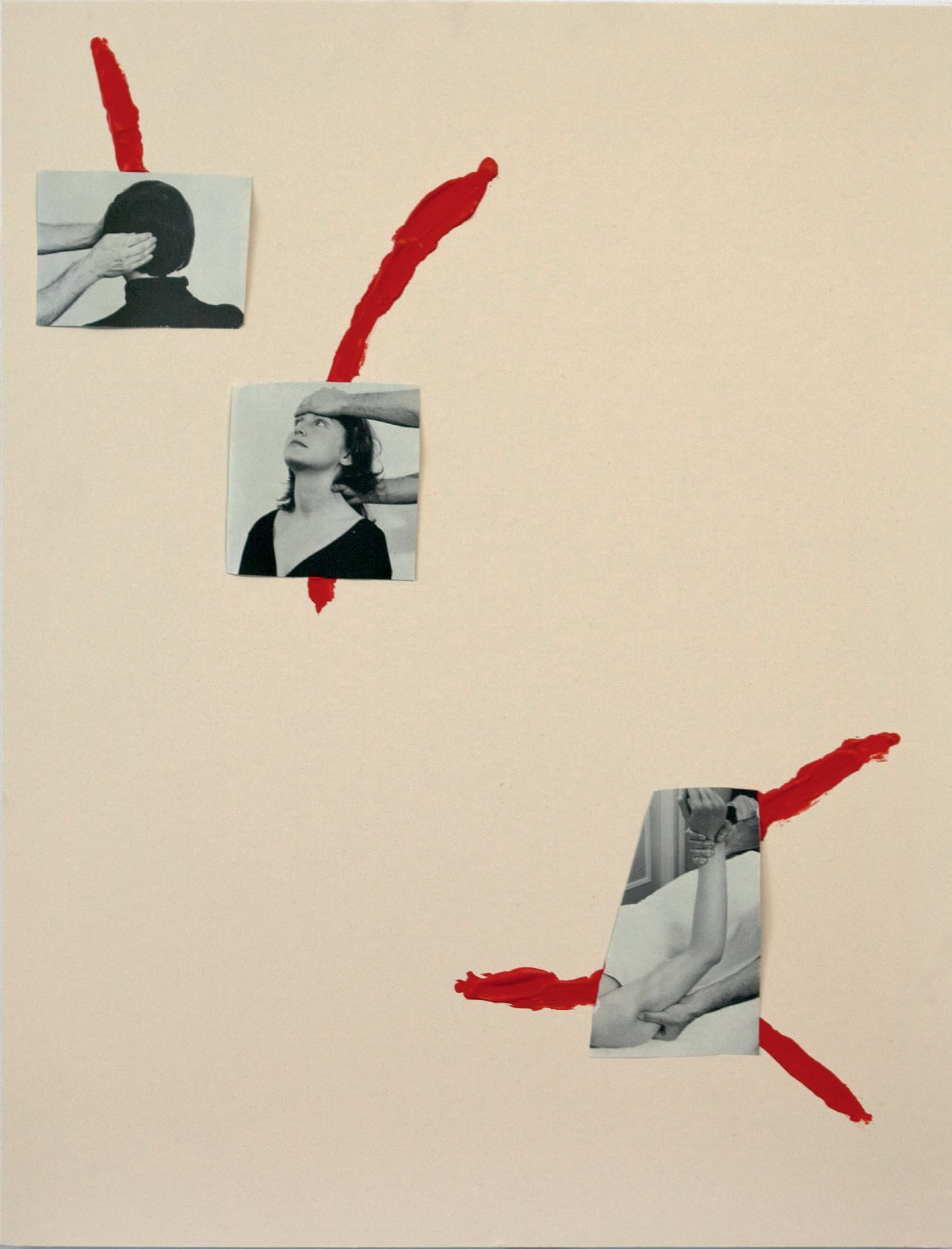
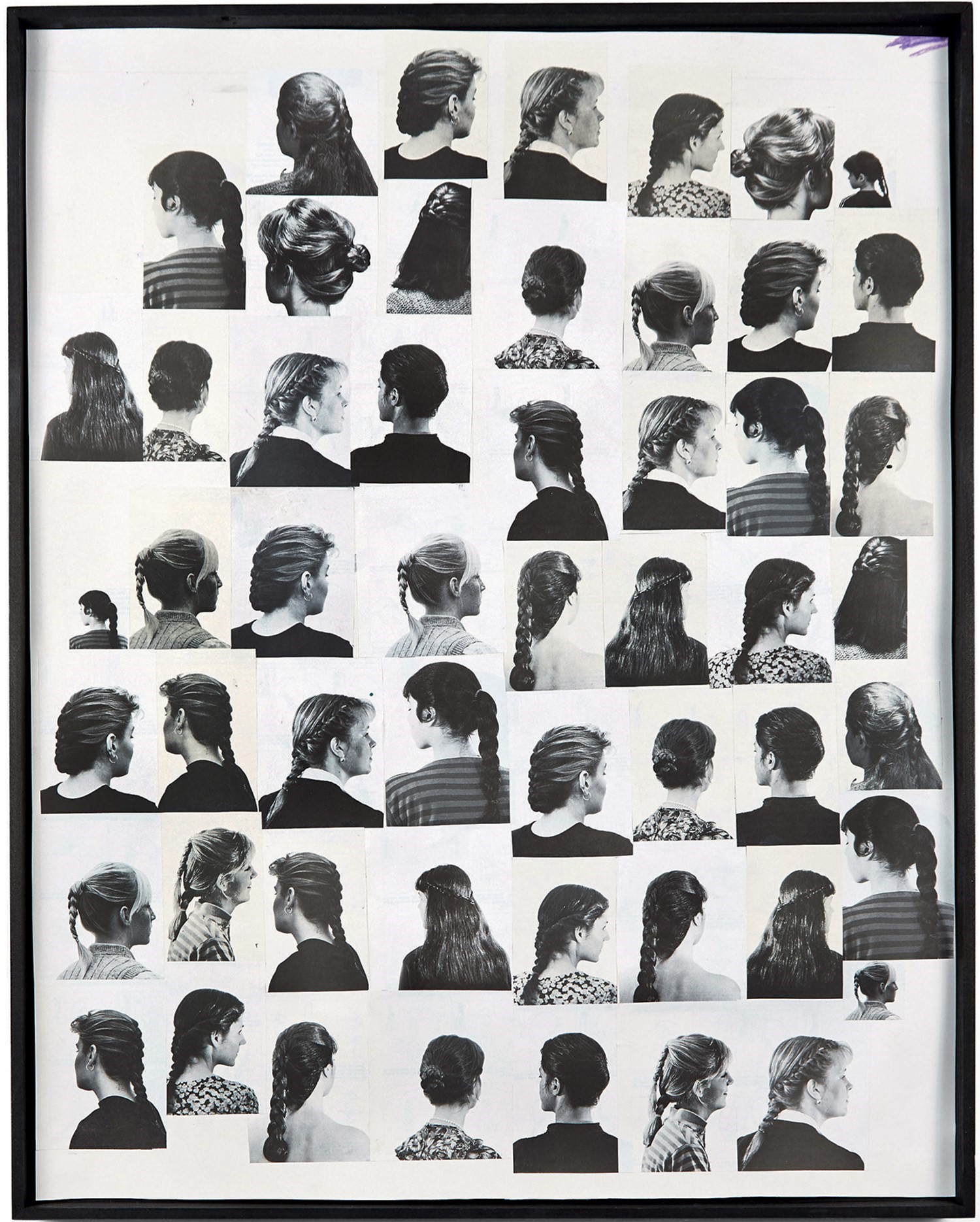
Carmen Winant’s show at Stene Projects, Stockholm, is open now; the show at Cave Detroit opens on December 1, 2018.
This full story originally featured in the Autumn/Winter 2018 issue of AnOther Magazine which will is on sale internationally now.
